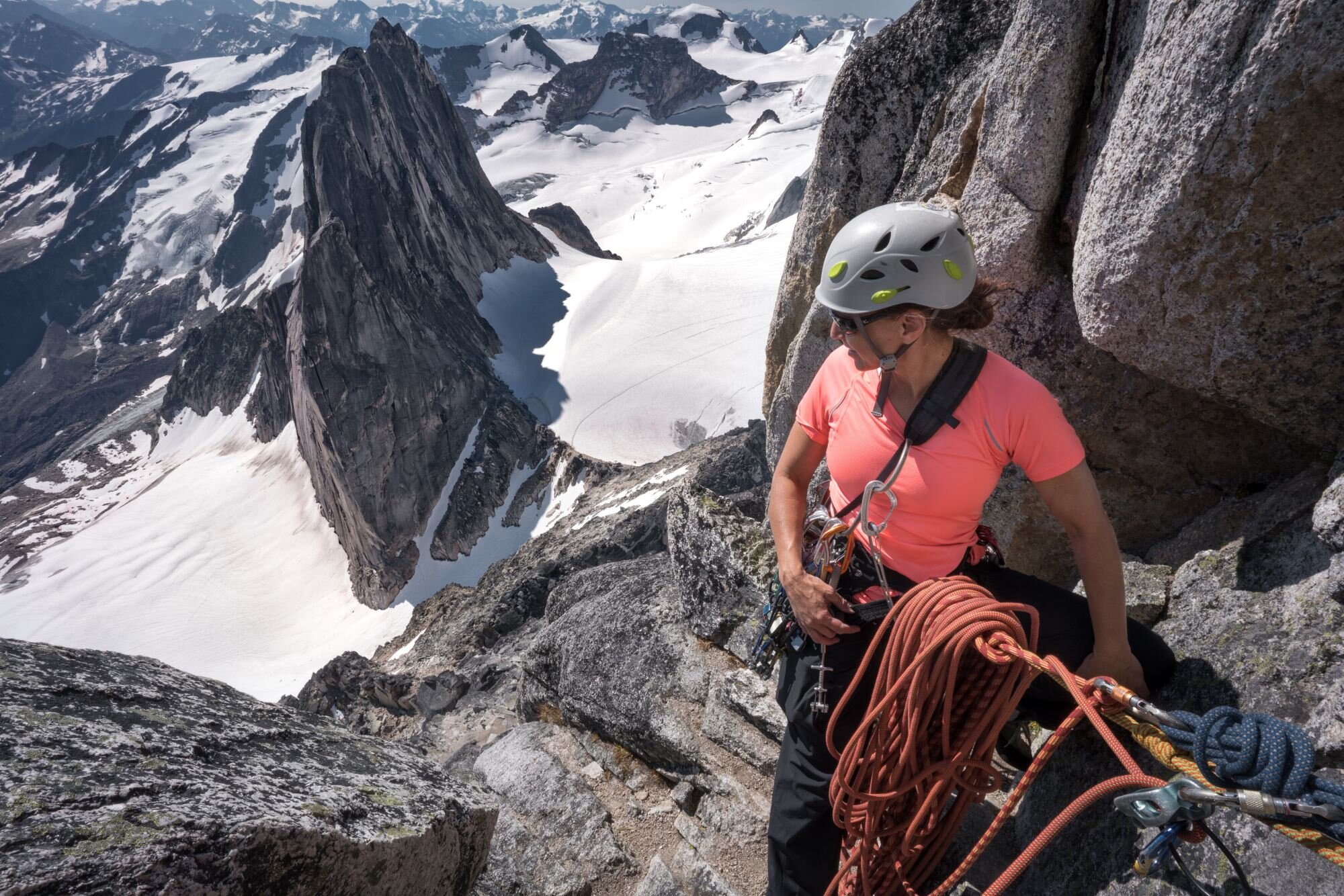
Belay
Common practice in many parts of Europe, belaying a leader directly from an anchor rather than your harness is a new idea for many Americans. This article covers an overview of the technique, pros and cons, an FAQ, photos of how to set it up, and print / video resources for further study.
In Climbing 101, you learned the standard verbal calls. Most of the time those work well. But what if you have a long pitch? That goes out of sight? High winds? A hoody layer or two over your ears? The standard calls may not work, and you better have a different way to communicate. Here’s a good one: the so-called “silent system.”
When climbing in blocks, where one person leads several pitches in a row, it's important to rig the anchor so the leader can easily unclip and continue. A good way to do this: use an extra locker to connect to the master point carabiner, rather than cloving directly to it.
If you're using a guide plate belay device such as a Petzl Reverso, it's important to know how to lower your partner if needed. There are various ways to do this, and some of them are rather complicated. Provided your second can give you a momentary bit of slack, here's a simple way to transfer the load from your device onto a Munter hitch.
Your belay device is a crucial piece of gear, and you don't want to drop it. Keep the device clipped to your harness pretty much all the time, and only unclip it for a moment when loading and unloading the rope.
Because the rope never touches your carabiner when you use a Grigri (or any similar assisted braking device), you can pretty much use any kind of carabiner you like. In fact, Petzl suggests that you don’t use an HMS carabiner.
On longer multi pitch routes, efficient belay changeovers can save a surprising amount of time. Here are two elegant ways to do this.
If you're using a Grigri or similar device on a top rope belay, and you have a heavy partner, small diameter, and/or wet/icy rope, sometimes you need additional friction. Here’s an easy way to do that - redirect the brake strand through a second carabiner.
You finish pitch 1 on a multi-pitch route, look up, and see some hard moves right off the belay to start pitch 2. Here are several ways to safeguard your belay and prevent a possible factor 2 fall.
There are times when lowering, rather than rappelling, is a smarter way to get down a route. Learn of some of the scenarios when this might be a smart move, and several common ways to set it up.
Belaying directly from the anchor with a plaquette style belay device like an ATC Guide has one significant drawback - it's difficult to lower your second if you need to. But with this Crafty Rope Trick, it's no problemo - all you need is some LSD.
Your ATC Guide or similar plaquette-style belay device is of course great for belay and rappel, but can also be rigged as an ascender. Learn how here.
There are four different things that a leader can do when they reach the top of a pitch. Be sure and agree on which one is going to happen with your partner before you leave the ground, not after.
A Munter hitch belay might seem old school, but it’s free, weightless, and a good skill to have in the toolbox. And for belaying the second, it has a big advantage over new school “plaquette” style belay devices.
Belaying a second can happen off your harness, or direct off the anchor. Learn the benefits of this technique - and one time to consider not using it.
















